What is Technology ?

Technology refers to the application of scientific knowledge, tools, techniques, and systems to create, modify, or improve goods and services, or to achieve specific goals. It encompasses a wide range of human-made artifacts, processes, and methods designed to solve problems, simplify tasks, enhance productivity, and improve overall efficiency across various domains.
Technology can take many forms, including physical devices (such as computers, smartphones, and robots), software applications, communication networks, medical equipment, transportation systems, and other related technologies. It involves the use of technical skills, scientific principles, and engineering practices to develop innovative solutions.
Technology has profoundly influenced human society, playing a crucial role in shaping our civilization. It has revolutionized communication, transportation, healthcare, entertainment, education, manufacturing, agriculture, and many other sectors. The rapid advancements in technology have led to increased connectivity, access to information, automation, and the ability to tackle complex problems.
Technology encompasses the practical application of scientific knowledge to create tools, systems, and processes that improve our lives, enhance efficiency, and drive progress in various fields.
3 main types of technology
There are several ways to classify types of technology, but here are three broad categories that cover a wide range of technological advancements:
- Information Technology (IT): Information Technology refers to the use of computers, software, networks, and telecommunications to store, retrieve, transmit, and manipulate data. This includes technologies related to computing hardware (such as computers, servers, and mobile devices), software development and applications (such as operating systems, programming languages, and productivity software), networking and internet technologies, and data management systems. IT plays a crucial role in data processing, communication, information storage, and digital services.

- Biotechnology: Biotechnology involves the use of biological systems, organisms, or living cells to develop or create products and processes that benefit various industries. This field includes genetic engineering, pharmaceuticals, medical devices, agricultural advancements, biofuels, and other applications that leverage biological processes for practical purposes. Biotechnology plays a crucial role in enhancing healthcare, crop yields, environmental sustainability, and industrial production.

- Industrial Technology: Industrial technology, also known as manufacturing technology or engineering technology, focuses on the application of machinery, tools, and processes to design, produce, and optimize goods and services on a large scale. It encompasses technologies related to manufacturing processes, automation, robotics, material sciences, energy production, transportation systems, and more. Industrial technology enables efficient mass production, resource utilization, and the development of complex infrastructure and machinery.


It’s essential to recognize that technology is a vast and ever-evolving field, with various subcategories and specialized branches within each of its main types. Additionally, other categories such as energy technology, environmental technology, aerospace technology, and many others contribute to the diverse landscape of technological advancements.
7 types of technology
Here are seven types of technology:
- Information Technology (IT): As mentioned earlier, IT encompasses computers, software, networks, and telecommunications for storing, retrieving, transmitting, and manipulating data. It includes areas such as computer hardware, software development, networking, databases, cybersecurity, and internet technologies.

- Biotechnology: Biotechnology involves the use of living organisms, biological systems, or their components to develop or create products and processes. It encompasses fields such as genetic engineering, pharmaceuticals, medical devices, agricultural biotechnology, biofuels, and biomanufacturing.
- Nanotechnology: Nanotechnology involves the manipulation and control of matter at the nanoscale, which is about one billionth of a meter. It focuses on the understanding, manipulation, and utilization of materials and devices at the atomic and molecular level. Nanotechnology has applications in electronics, medicine, materials science, energy, and numerous other fields.
- Robotics and Artificial Intelligence (AI): Robotics involves the design, development, and use of robots or automated machines that can perform tasks autonomously or with human assistance. AI focuses on creating intelligent machines that can simulate human cognitive abilities, such as learning, problem-solving, and decision-making.
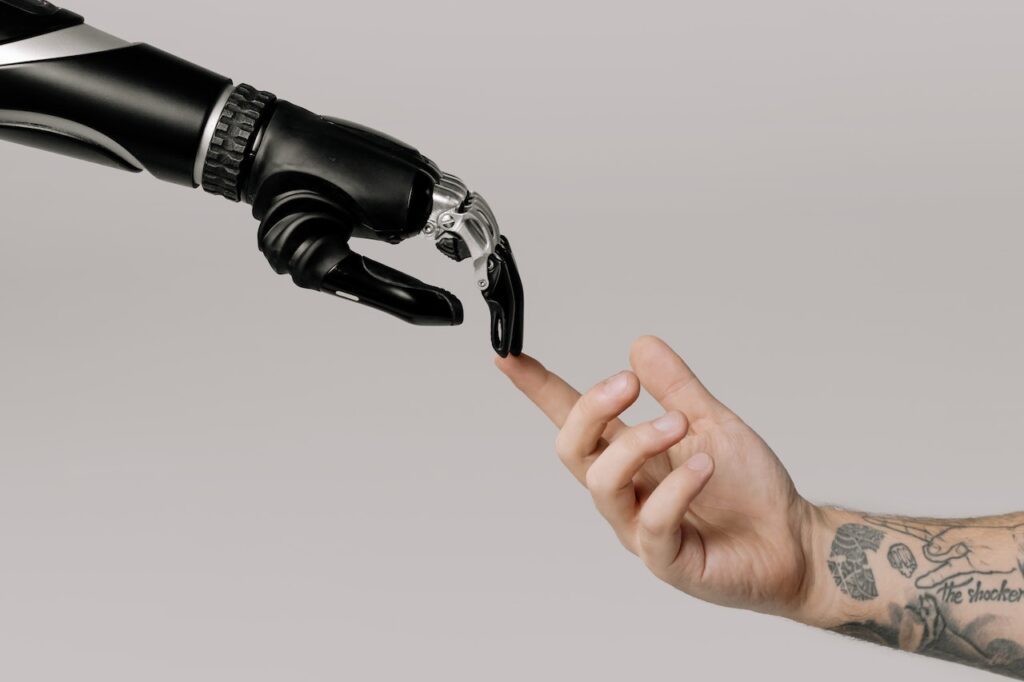
- Renewable Energy Technology: Renewable energy technology encompasses various technologies that harness energy from renewable sources, including solar, wind, hydro, geothermal, and biomass. These technologies aim to generate clean and sustainable energy while reducing reliance on fossil fuels and minimizing environmental impact.

- Aerospace Technology: Aerospace technology deals with the design, development, and operation of aircraft, spacecraft, and related systems. It encompasses areas such as aeronautics (aircraft design and engineering), astronautics (spacecraft design and engineering), propulsion systems, navigation and control systems, and materials used in aerospace applications.
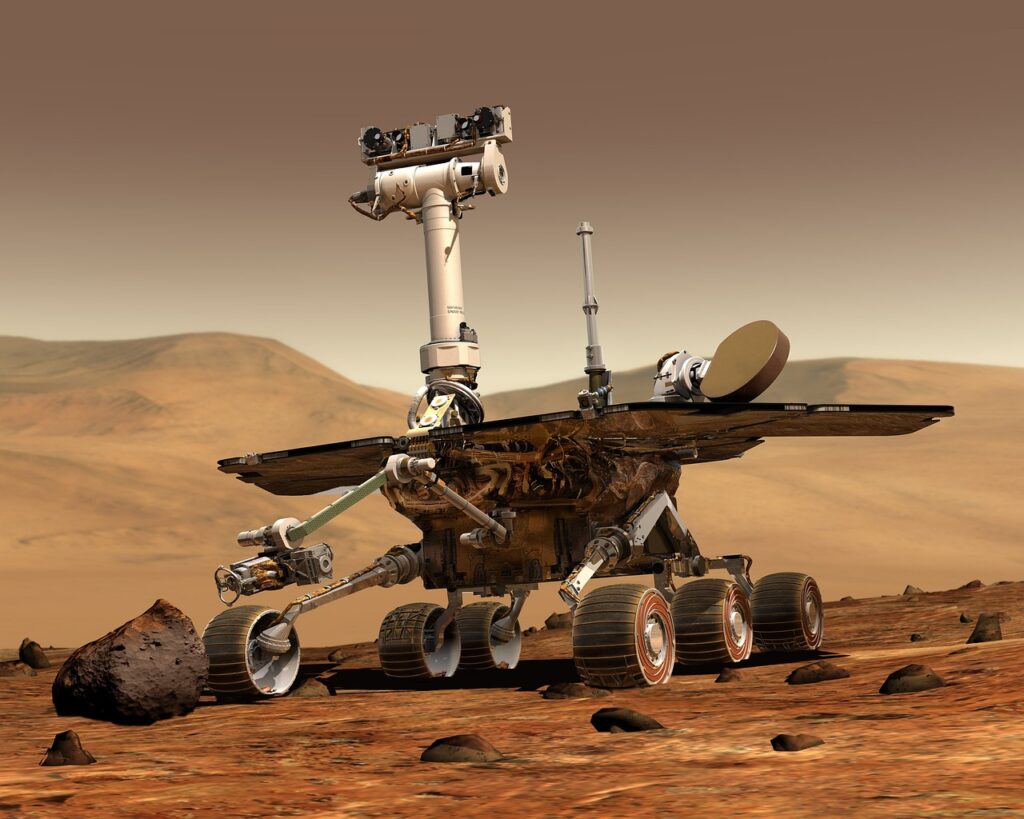
- Green Technology: Green technology, also referred to as environmental or sustainable technology, focuses on developing and utilizing technologies that have minimal environmental impact and promote ecological sustainability. This includes technologies for waste management, water purification, energy efficiency, sustainable agriculture, and pollution control.
These are just a few examples, and there are many more types and subcategories of technology. The field of technology is vast and constantly evolving, with new technologies emerging and existing ones advancing over time.
Importance of technology
What is the importance of technology, with examples:
Technology plays a crucial and increasingly vital role in our lives, society, and the world. Here are some key reasons why technology is essential:
Enhancing Efficiency and Productivity: Technology has the potential to automate and streamline processes, increasing efficiency and productivity in various fields. From automated manufacturing processes to advanced software tools, technology helps us accomplish tasks faster and with fewer errors.
Enabling Communication and Connectivity: Technology has transformed communication, making it faster, more accessible, and global. Through the internet, smartphones, and social media platforms, we can connect with others worldwide, share information, collaborate, and bridge cultural and geographical divides.
Empowering Education and Learning: Technology has revolutionized education by providing access to vast amounts of information and online learning resources. It enables personalized learning experiences, interactive tools, and online collaboration, expanding educational opportunities and reaching learners of all ages and backgrounds.
Facilitating Research and Innovation: Technology fuels scientific research and innovation by providing tools, equipment, and computational power. Advanced technologies, including gene sequencing, supercomputers, and data analytics, accelerate discoveries, leading to breakthroughs in various fields such as medicine, energy, and environmental sustainability.
Improving Healthcare: Technology has transformed healthcare with innovations such as medical imaging devices, electronic health records, telemedicine, and wearable health trackers. These advancements enable early detection, accurate diagnoses, remote monitoring, and personalized treatments, leading to improved patient care and outcomes.
Enhancing Accessibility and Inclusion: Technology has the power to break down barriers and provide equal opportunities for individuals with disabilities. Assistive technologies, such as screen readers, speech recognition software, and mobility aids, enable people with disabilities to access information, communicate, and participate in society.
Driving Economic Growth: Technology fosters economic growth by creating new industries, generating job opportunities, and providing avenues for innovation. It enables the development of new products, services, and business models, fostering entrepreneurship and economic advancement.
Enabling Sustainable Development: Technology plays a critical role in addressing environmental challenges and promoting sustainability. Renewable energy technologies, energy-efficient devices, smart grids, and ecological monitoring systems help reduce carbon emissions, conserve resources, and mitigate the effects of climate change.
Enhancing Safety and Security: Technology plays a crucial role in improving safety and security across various domains. From surveillance systems and biometric authentication to emergency response systems and cybersecurity measures, technology plays a vital role in protecting individuals, assets, and critical infrastructure.
Fostering Convenience and Quality of Life: Technology has brought significant conveniences to our lives, making tasks easier and enhancing our overall quality of life. From online shopping and entertainment streaming to home automation and smart devices, technology offers convenience, entertainment, and improved living standards.
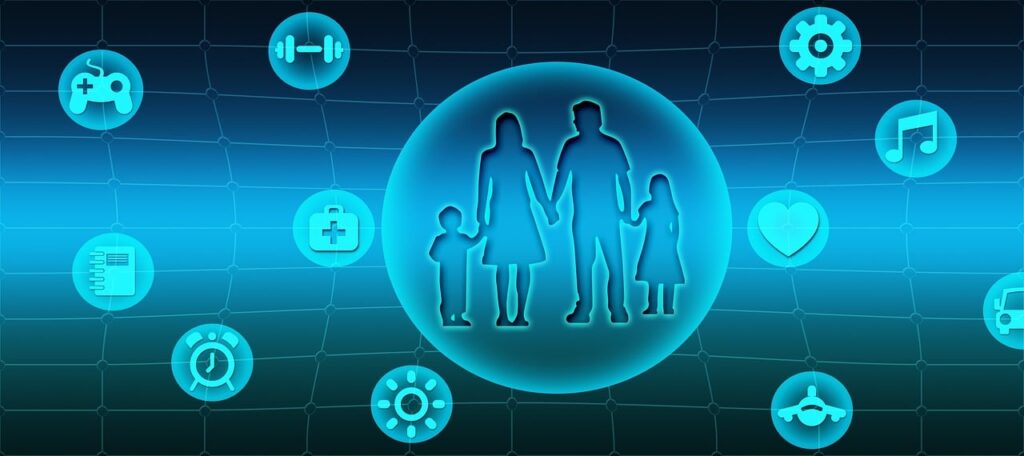
Overall, technology is essential for progress, innovation, and addressing global challenges. It empowers individuals, organizations, and societies to overcome limitations, improve efficiency, and create positive change. Embracing and harnessing technology wisely can lead to transformative outcomes and a brighter future.
5 importance of technology
Here are five key importance of technology:
- Advancing Human Progress: Technology has played a crucial role in advancing human progress and enhancing the overall quality of life. From medical advancements to improved communication and transportation, technology has transformed our society, enabling us to overcome challenges, find innovative solutions, and create new opportunities.
- Driving Economic Growth and Innovation: Technology is a key driver of economic growth and innovation. It fosters the development of new industries, creates job opportunities, and drives productivity. Technological advancements open up new markets, streamline business processes, and enable the creation of innovative products and services, contributing to economic development and prosperity.

- Enhancing Efficiency and Productivity: Technology enhances efficiency and productivity across various sectors. Automation, robotics, and advanced software tools streamline processes, reduce human errors, and enable faster and more accurate operations. By automating repetitive tasks and augmenting human capabilities, technology frees up time and resources, allowing us to focus on higher-value activities.

- Improving Access to Information and Education: Technology has revolutionized access to information and education. The internet, online platforms, and digital resources provide vast amounts of information, educational content, and opportunities for lifelong learning. Technology enables remote education, online courses, and interactive learning experiences, making education more accessible and inclusive.
- Addressing Global Challenges: Technology plays a crucial role in addressing global challenges, such as climate change, healthcare, and sustainable development. Renewable energy technologies, environmental monitoring systems, and advanced medical devices contribute to mitigating environmental impact, improving healthcare outcomes, and promoting sustainable practices. Technology enables data-driven decision-making and innovative solutions to tackle complex problems.
Types of technology we use every day
There are numerous types of technology that we use in our everyday lives. Here are some standard Technology examples :
Technology examples in daily life
- Mobile Devices: Smartphones and tablets have become an integral part of our lives, providing us with communication tools, access to information, entertainment, and a wide range of applications.
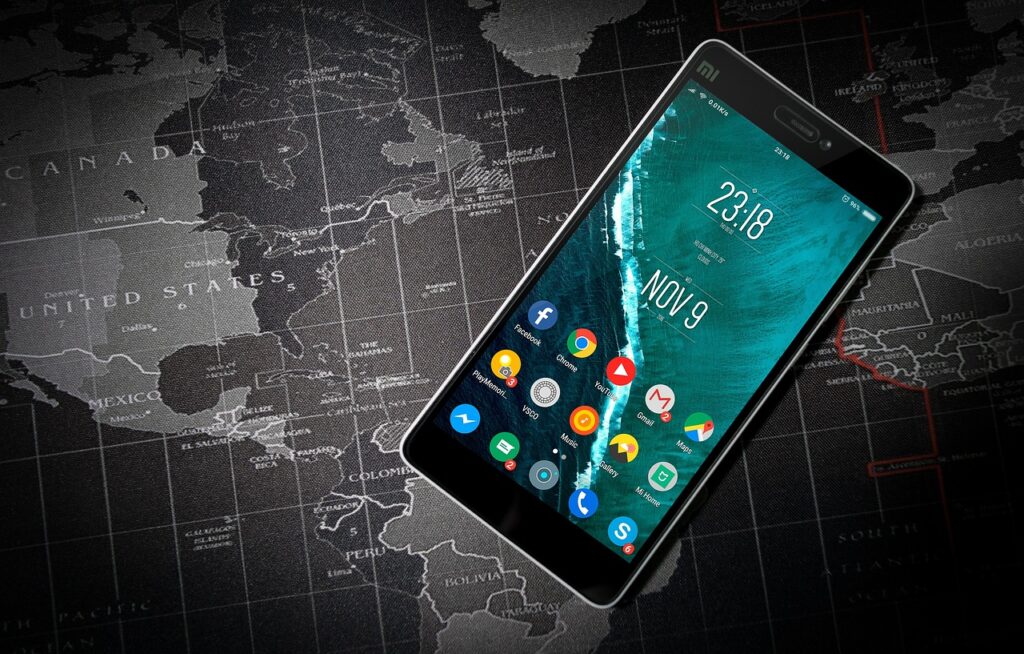
- Computers: Personal computers and laptops are used for various tasks, including work, education, entertainment, and communication. They enable us to create documents, browse the internet, send emails, and perform numerous other activities.

- Internet: The internet has transformed the way we access information, communicate, and conduct business. It allows us to browse websites, send emails, use social media, stream media content, and engage in online shopping and banking.

- Social media platforms, such as Facebook, Instagram, Twitter, and LinkedIn, enable us to connect and interact with others, share experiences, and stay updated on current events and trends.
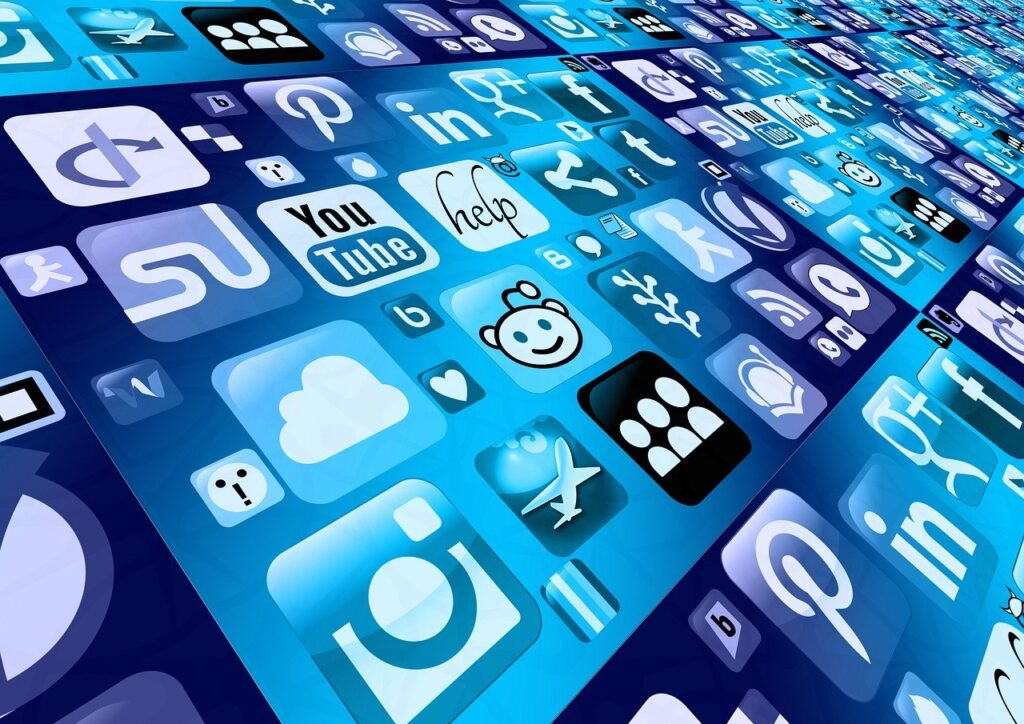
- Online Banking: Online banking services allow us to manage our finances, transfer money, pay bills, and access account information conveniently and securely through websites and mobile apps.
- Streaming Services: Services like Netflix, Amazon Prime Video, and Spotify offer us on-demand access to movies, TV shows, music, and other digital content, which we can stream at any time and from anywhere.
- GPS Navigation: Global Positioning System (GPS) technology is integrated into our smartphones and car navigation systems, providing accurate location tracking and turn-by-turn directions for navigation.
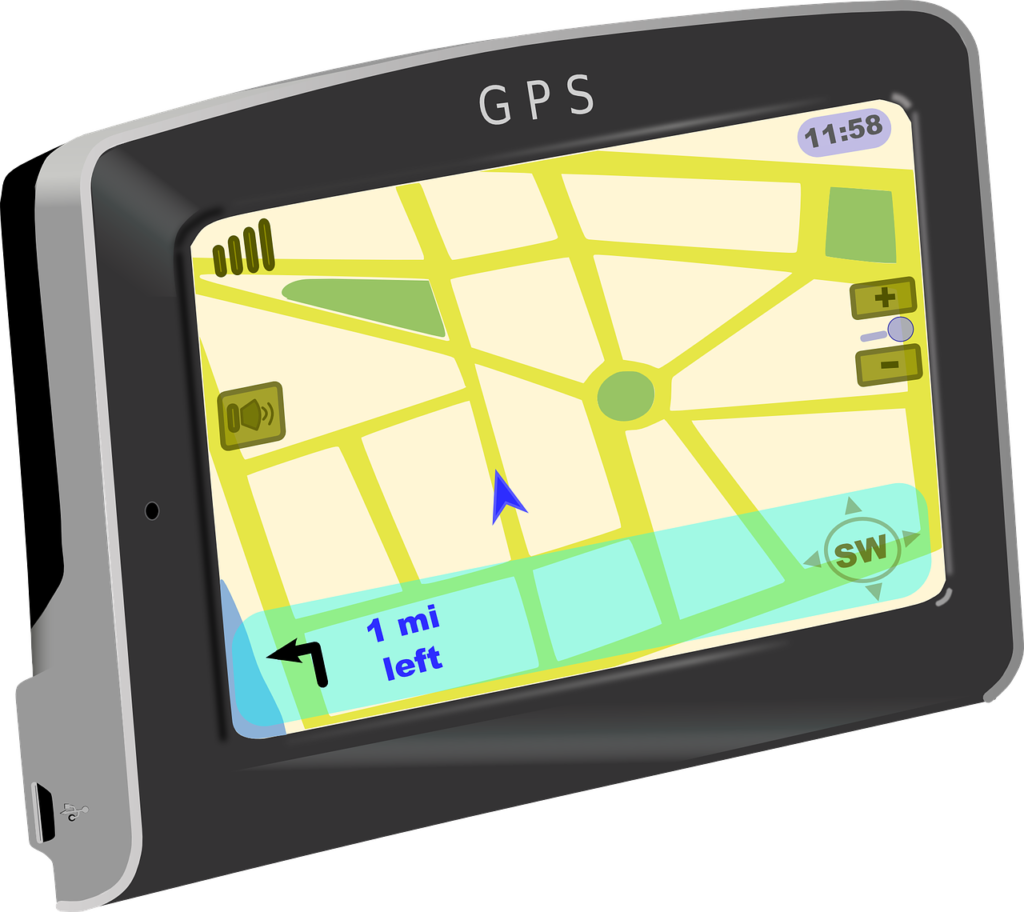
- Wearable Devices: Technology examples in everyday life. Smartwatches, fitness trackers, and other wearable devices monitor our health, track physical activities, and provide notifications and information on the go.
- Online Shopping: E-commerce platforms like Amazon, eBay, and various online retailers enable us to shop for a wide range of products and services, allowing us to make purchases conveniently from our devices.

- Online Communication Tools: another Technology example in daily life. Technologies such as email, instant messaging apps (e.g., WhatsApp, Messenger), and video conferencing tools (e.g., Zoom, Microsoft Teams) enable us to communicate and collaborate with others remotely.
What is technology in computers?
In the context of computers, technology refers to the hardware and software components that comprise computer systems, enabling them to perform various tasks. Computer technology refers to the study, development, and application of computer systems and software. It encompasses a wide range of areas related to computing and information technology. Here are some key aspects of technology in computer systems:
- Computer Hardware: Computer technology encompasses the physical components of a computer system, including the central processing unit (CPU), memory (RAM), storage devices (hard drives, solid-state drives), input and output devices (keyboard, mouse, monitor), and other peripherals.
- Operating Systems: An operating system (OS) is a crucial piece of computer technology that manages computer hardware and software resources, provides a user interface, and facilitates communication between applications and the underlying hardware. Examples of popular operating systems include Windows, macOS, and Linux.
- Software Applications: Software technology refers to the programs and applications that run on computers. These can include productivity software (word processors, spreadsheets), creative tools (graphic design software, video editors), communication software (email clients, web browsers), and specialized applications for specific industries or purposes.
- Networks and Connectivity: Networking technology enables computers to connect and communicate with each other, allowing data transfer, resource sharing, and internet access. This includes technologies such as Ethernet, Wi-Fi, and Bluetooth, as well as network protocols and standards.
- Computer Security: Technology in computer systems also includes measures and tools for protecting data and systems from unauthorized access, viruses, malware, and other security threats. This involves technologies like firewalls, antivirus software, encryption algorithms, and secure authentication mechanisms.

- Data Storage and Retrieval: Computer technology involves various methods of storing and retrieving data. This includes hard drives, solid-state drives (SSDs), optical storage (CDs, DVDs), and cloud storage services. Technologies such as file systems and databases enable the efficient organization, search, and retrieval of data.
- Computer Architecture and Design: Computer technology encompasses the design and architecture of computer systems. This includes the arrangement and interconnection of components, instruction sets, memory hierarchies, and overall system optimization to ensure efficient and reliable operation.
These are just a few aspects of technology in computer systems. The field of computer technology is vast and constantly evolving, with new advancements and innovations being made regularly to improve performance, functionality, and user experience.
Computer technology introduction
Computer technology has revolutionized the way we live, work, and communicate in the modern world. It encompasses a wide range of hardware and software components that enable the processing, storage, and retrieval of data. Computer technology has become an integral part of nearly every industry and aspect of society, shaping how we gather information, solve problems, conduct business, and interact with others.
At its core, computer technology involves the design, development, and application of computer systems and software. Computer hardware includes components such as processors, memory modules, storage devices, input/output devices, and networking equipment. These physical components work together to process and manipulate data.
On the other hand, computer software refers to the programs, applications, and operating systems that run on computer hardware. Software allows users to perform specific tasks, access information, and interact with computer systems. It encompasses everything from productivity software and entertainment applications to specialized software used in fields such as engineering, healthcare, and finance.
Computer technology also encompasses various areas, including computer networks, cybersecurity, data management, artificial intelligence, virtual reality, and more. It is a rapidly evolving field that constantly pushes the boundaries of what computers can do and how they can be used to solve complex problems.
The impact of computer technology is evident in various sectors. It has transformed industries such as healthcare, finance, manufacturing, education, entertainment, and transportation. Computers and the internet have made information readily accessible, connected people worldwide, and provided new avenues for communication and collaboration.
Moreover, computer technology has enabled automation, efficiency, and innovation in processes and systems. Tasks that were once time-consuming or manual can now be automated, freeing up human resources for more strategic and creative endeavors.
As technology continues to advance, computer technology plays a vital role in driving progress and shaping the future. It has the potential to address societal challenges, improve the quality of life, and create new opportunities. Understanding and harnessing computer technology is crucial in navigating the digital age and unlocking its benefits for individuals, businesses, and society as a whole.
5 examples of computer technology
Here are five examples of computer technology:
- Cloud Computing: Cloud computing technology enables users to access computing resources, such as storage, processing power, and applications, over the internet. It enables businesses and individuals to store and access data remotely, scale resources as needed, and utilize software and services without requiring on-site infrastructure.

- Artificial Intelligence (AI): AI technology involves the development of intelligent systems that can perform tasks that typically require human intelligence. This includes machine learning, natural language processing, computer vision, and robotics. AI is utilized in various applications, including voice assistants, image recognition, recommendation systems, and autonomous vehicles.

- Virtual Reality (VR) and Augmented Reality (AR): These technologies create immersive virtual experiences or overlay digital information onto the real world. VR typically involves the use of headsets and controllers to simulate a virtual environment. At the same time, AR enhances the real world by overlaying digital elements, such as graphics or information, onto the user’s view through devices like smartphones or smart glasses. These technologies have applications in gaming, training, education, and entertainment.
- Internet of Things (IoT): The IoT refers to the network of physical devices embedded with sensors, software, and connectivity to exchange data and interact with their environment. IoT technology enables devices such as smart home appliances, wearable devices, industrial sensors, and connected vehicles to communicate and share information, leading to automation, data collection, and enhanced efficiency in various domains.
- Blockchain: Blockchain technology is a decentralized and distributed ledger system that securely records and verifies transactions across multiple computers. It provides transparency, security, and trust in digital transactions, eliminating the need for intermediaries. Blockchain technology is commonly associated with cryptocurrencies like Bitcoin, but its applications extend to various areas, including supply chain management, healthcare, finance, and voting systems.
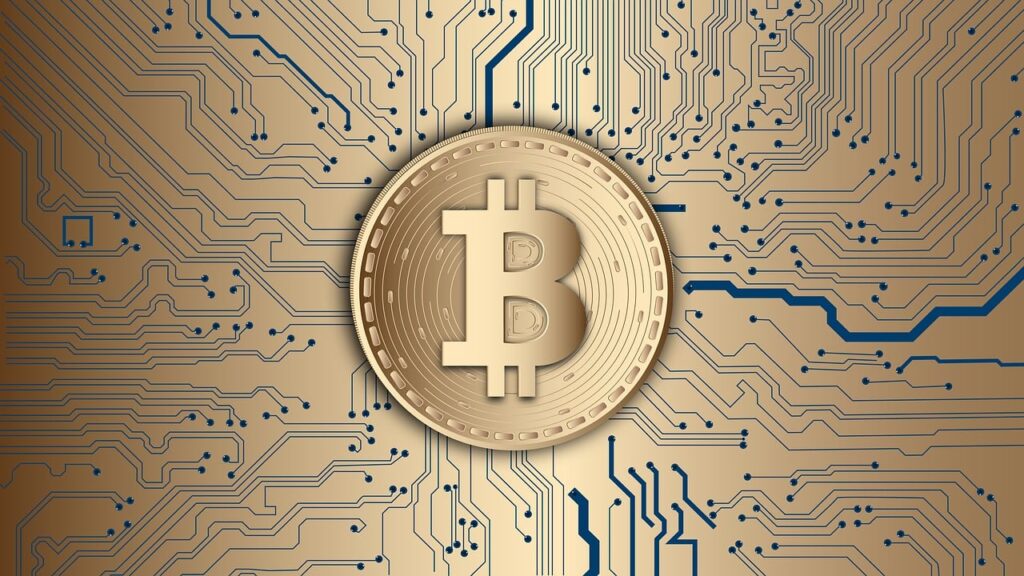
These examples illustrate some of the diverse applications of computer technology, highlighting how advancements in technology continue to shape and transform various industries and aspects of our daily lives.
What is computer technology in education?
Computer technology in education refers to the integration and use of computers and related technologies to enhance teaching, learning, and educational processes. It involves leveraging technology to support and improve various aspects of education, from classroom instruction to administrative tasks. Here are some key elements of computer technology in education:
- Digital Learning Resources: Computer technology enables access to a vast array of digital learning resources, including educational websites, online courses, multimedia content, and digital textbooks. These resources offer interactive and engaging learning experiences that can supplement and enhance traditional classroom instruction.

- Online Learning Platforms: Computer technology has given rise to online learning platforms and learning management systems (LMS) that facilitate remote and flexible learning. These platforms provide virtual classrooms, discussion forums, assignment submission, and grading functionalities, enabling students and teachers to connect and engage in online educational activities.
- Interactive Teaching Tools: Computers and educational software provide interactive tools and simulations that enhance learning by making it more engaging and effective. For example, interactive whiteboards, educational apps, and virtual laboratories allow students to explore concepts, conduct experiments, and visualize complex ideas in a more interactive and hands-on manner.
- Collaboration and Communication: Computer technology facilitates collaboration and communication among students and teachers. Online platforms, video conferencing tools, and collaborative software enable real-time communication, project collaboration, and remote teamwork, fostering a sense of community and facilitating the sharing of knowledge.
- Data Analysis and Assessment: Computer technology enables the collection and analysis of data to inform instruction and assess student performance. Learning analytics and data-driven tools would allow educators to track student progress, identify areas for improvement, and personalize learning experiences tailored to individual needs and learning styles.
- Administrative and Management Systems: Computer technology supports administrative tasks in educational institutions, including student information systems, online registration, digital gradebooks, and attendance tracking. These systems streamline administrative processes, enhance efficiency, and provide accurate data for decision-making.
- Digital Literacy and Computer Skills: Computer technology in education also aims to develop digital literacy and computer skills among students. It equips them with the necessary knowledge and skills to navigate digital tools, critically evaluate online information, and use technology responsibly and ethically.
- Computer technology in education has the potential to enhance access to education, individualize learning experiences, foster collaboration, and prepare students for the digital age. However, it is essential to ensure equitable access to technology and provide teachers with the necessary support to integrate it into the curriculum effectively.
Simple technology examples
Here are some simple examples of everyday technology:
Simple technology examples
Remote Control: A remote control is a simple technology that allows users to operate electronic devices wirelessly, such as televisions, DVD players, or air conditioners.
Flashlight: A flashlight is a portable, handheld device that uses battery power to produce light. It is a handy and straightforward technology for illuminating dark areas.
Calculator: A calculator is a simple electronic device used for mathematical calculations. They come in various forms, from basic pocket calculators to scientific or graphing calculators.
Digital Thermometer: Digital thermometers offer a quick and accurate method for measuring body temperature or the temperature of objects. They typically display the temperature digitally for easy reading.
Digital Watches: Digital watches have built-in electronic displays that show the time in a numerical format. They often come with additional features such as alarms, timers, and stopwatch functions.
USB Flash Drive: A USB flash drive is a small, portable storage device that enables the easy transfer and storage of digital files. It connects to computers or other devices via a USB port.
Remote Car Key: Many cars are equipped with remote key fobs that allow owners to lock, unlock, and remotely start their vehicles with the press of a button.
Portable Bluetooth Speakers: Portable Bluetooth speakers are wireless devices that utilize Bluetooth technology to connect to smartphones, tablets, or computers, allowing for wireless audio playback.
Digital Cameras: Digital cameras capture and store photographs in a digital format, allowing for easy viewing, editing, and sharing of images.

Electric Toothbrush: Electric toothbrushes use electrical power to vibrate or rotate the bristles, providing a more effective and convenient way to clean teeth compared to manual toothbrushes.
These examples highlight some simple technologies that we encounter in our daily lives. While they may seem basic, they demonstrate how even the simplest technologies can enhance our comfort, convenience, and overall experience.
Examples of technology devices
Here are some examples of technology devices across different categories:
Laptops: Laptops are portable computing devices that offer a full range of computer capabilities, including a keyboard, display, storage, and connectivity options, allowing users to perform a wide range of tasks on the go.

Tablets: Tablets are lightweight, touchscreen devices that provide similar functionality to laptops but in a more portable form factor. They are popular for browsing the internet, consuming media, reading e-books, and running apps.
Smartwatches: Smartwatches are wearable devices that can be worn on the wrist. They offer features such as fitness tracking, notifications, music playback, and the ability to run various apps.

Fitness Trackers: Fitness trackers are wearable devices designed to monitor and track physical activities, heart rate, sleep patterns, and other health-related data. They are often used for fitness and wellness purposes.

Virtual Reality Headsets: Virtual Reality (VR) headsets immerse users in a virtual environment, allowing them to experience interactive and immersive content. They are used for gaming, training, simulation, and entertainment purposes.
Home Assistants: Home assistants, such as Amazon Echo or Google Home, are voice-activated devices that use artificial intelligence to respond to voice commands, provide information, control smart home devices, play music, and perform various tasks.

Smart TVs: Smart TVs are televisions equipped with internet connectivity and built-in apps. They allow users to stream content from platforms like Netflix and YouTube, browse the web, and access various entertainment options.
Drones: Drones are unmanned aerial vehicles (UAVs) that can be remotely controlled or autonomously operated. They are used for aerial photography, videography, surveillance, delivery services, and recreational purposes.
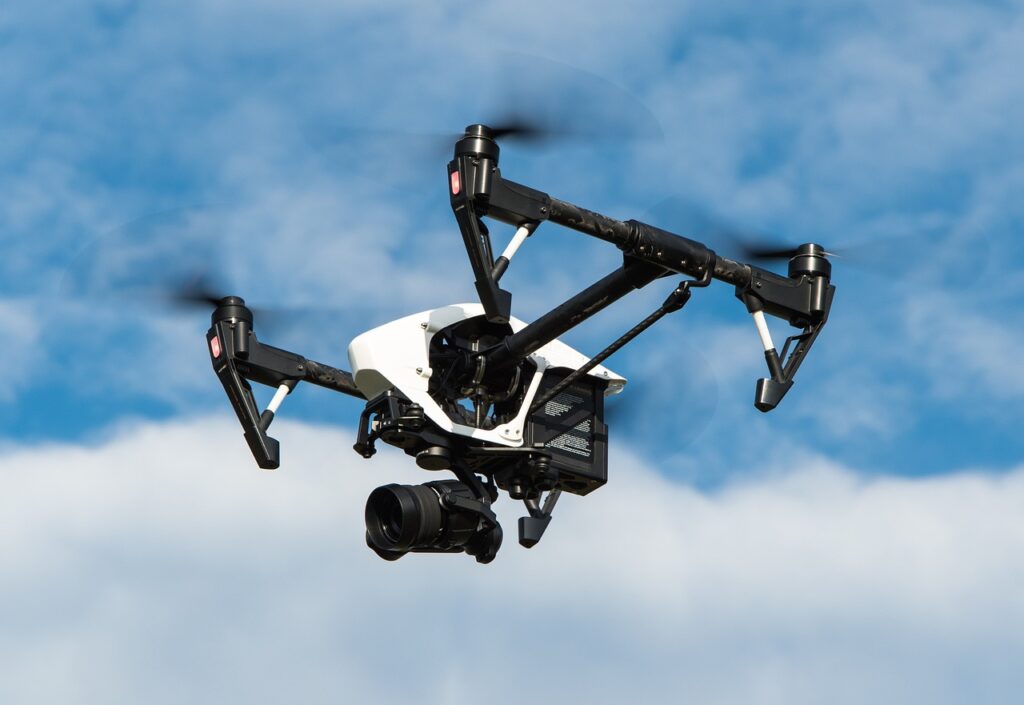
E-readers: E-readers, such as the Amazon Kindle, are devices specifically designed for reading e-books. They feature electronic ink displays that simulate the look of printed text and offer convenient access to a vast library of digital books.

These are just a few examples of technology devices, and the list continues to expand as technology advances. These devices demonstrate how technology has evolved to enhance various aspects of our lives, including communication, entertainment, productivity, and health.
Technology examples in science
Here are some examples of technology used in the field of science:
- Microscopes: Microscopes are essential tools in scientific research, allowing scientists to observe and study microscopic organisms, cells, tissues, and structures. They can be optical microscopes, electron microscopes, or other specialized types.
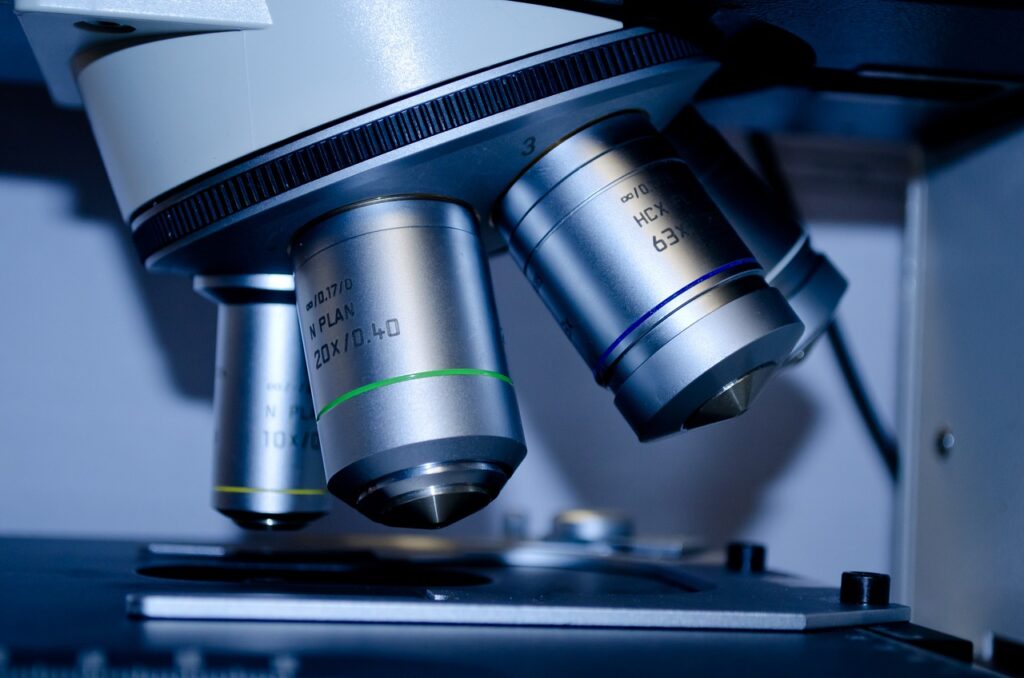
- Spectrometers: Spectrometers are instruments used to measure and analyze the interaction of matter with different wavelengths of electromagnetic radiation. They are widely used in chemistry, physics, and astronomy to study the composition and properties of substances.
- DNA Sequencers: DNA sequencers are technologies used to determine the precise sequence of nucleotides in a DNA molecule. They have revolutionized genetics and genomics research, enabling scientists to understand genetic variations, study diseases, and identify genetic markers.
- Mass Spectrometers: Mass spectrometers are instruments used to measure and analyze the mass and structure of molecules. They are widely used in chemistry, biochemistry, and pharmacology to identify compounds, analyze complex mixtures, and study molecular interactions.
- Particle Accelerators: Particle accelerators are powerful machines that accelerate charged particles to high speeds and energies. They are used in various areas of research, including nuclear physics, particle physics, and material science, to study fundamental particles and their interactions.
- Genetic Engineering Tools: Technologies such as CRISPR-Cas9 have revolutionized the field of genetic engineering. These tools allow scientists to modify DNA with high precision, enabling advancements in gene therapy, genetic research, and biotechnology.
- Telescopes: Telescopes are optical instruments used to observe distant objects in space. They enable astronomers to study celestial bodies, such as stars, planets, galaxies, and nebulae, helping expand our understanding of the universe.
- High-Performance Computing: High-performance computing systems provide substantial computational power for complex simulations, data analysis, and modeling in scientific research. They are crucial for fields like weather forecasting, climate modeling, drug discovery, and computational biology.
- Lab Automation Systems: Lab automation systems utilize robotics and advanced software to automate laboratory processes, including sample handling, testing, and data analysis. They improve efficiency, accuracy, and reproducibility in scientific experiments and workflows.
- Imaging Technologies: Various imaging technologies, such as magnetic resonance imaging (MRI), positron emission tomography (PET), and X-ray imaging, play a vital role in medical and biological research, enabling non-invasive visualization and study of internal structures and functions.
These examples illustrate how technology plays a crucial role in advancing scientific knowledge, enabling researchers to explore, analyze, and comprehend the natural world. Technology continues to push the boundaries of scientific discovery, leading to breakthroughs and innovations across various scientific disciplines.
At the end of this section, we have listed 20 common and famous everyday technologies for you.
Here are 20 diverse examples of technology across different domains:
- Smartphones
- Laptops
- Tablets
- Artificial Intelligence (AI)
- Virtual Reality (VR) headsets
- Internet of Things (IoT) devices
- 3D printers
- Autonomous vehicles
- Drones
- Blockchain
- Renewable energy technologies (solar panels, wind turbines)
- Augmented Reality (AR) applications
- Biometric authentication systems (fingerprint scanners, facial recognition)
- Voice assistants (Amazon Alexa, Google Assistant)
- Wireless charging technology
- Robotic surgical systems
- Smart home automation systems
- Nanotechnology
- Gesture recognition technology
- Wearable fitness trackers
Technology development
Technology development refers to the continuous advancement, improvement, and innovation of various technologies. It encompasses the creation and refinement of new tools, systems, processes, and devices that enhance human capabilities, improve efficiency, and drive progress in various fields. Technology development involves research, experimentation, engineering, and the application of scientific knowledge to create practical solutions.
Here are some key aspects and stages of technology development:
- Research and Discovery: Technology development often begins with research and exploration of new scientific concepts, principles, and theories. Researchers conduct experiments, collect data, and analyze findings to gain a deeper understanding of the underlying principles and possibilities.
- Conceptualization and Design: Based on research findings, concepts and ideas are formulated to address specific challenges or meet certain needs. Engineers and designers work to conceptualize and develop the initial design of the technology, considering factors such as functionality, usability, feasibility, and safety.
- Prototyping and Testing: Prototyping involves building a preliminary version of the technology to test its functionality, performance, and user experience. Through testing and iterations, engineers identify and address any design flaws, refine the technology, and optimize its features and performance.
- Manufacturing and Production: Once the design and prototype have been refined, the technology moves into the manufacturing phase. Manufacturers use specialized processes and techniques to produce the technology at scale, ensuring quality, consistency, and cost-effectiveness.
- Deployment and Implementation: After manufacturing, the technology is deployed and implemented in real-world settings. This involves installation, configuration, and integration with existing systems or infrastructure, as well as training and support for users.
- Continuous Improvement and Upgrades: Technology development is an ongoing process that involves continuous improvement and upgrades. Feedback from users, performance data, and market demands drive further enhancements, updates, and new iterations of the technology to keep pace with evolving needs and emerging technologies.

Technology development is driven by a combination of factors, including scientific advancements, market demands, societal needs, and the pursuit of innovation. It fuels progress across various sectors, such as healthcare, communication, transportation, energy, and entertainment, shaping the way we live, work, and interact with the world around us.
Technology development process
The technology development process involves a series of steps and stages that organizations and individuals follow to bring a new technology from concept to implementation. While the exact process can vary depending on the specific technology and context, here is a general overview of the technology development process:
- Identify the Need or Opportunity: The process begins by identifying a need or recognizing an opportunity where technology can provide a solution or improvement. This can arise from market research, customer feedback, or internal assessment of existing systems or processes.
- Research and Conceptualization: Once the need or opportunity is identified, research is conducted to explore existing technologies, scientific principles, and potential approaches. This stage involves gathering information, analyzing feasibility, and brainstorming ideas to conceptualize the technology solution.
- Design and Planning: In this stage, the technology concept is further refined, and a detailed plan is developed. This includes defining functional requirements, technical specifications, performance metrics, and any necessary design considerations.
- Prototyping and Development: A prototype or working model of the technology is created to test its feasibility, functionality, and performance. This stage involves engineering and development work to translate the design into a tangible prototype or software application.
- Testing and Evaluation: The prototype undergoes rigorous testing to assess its performance, reliability, and user experience. This includes functional testing, stress testing, user testing, and validation against the defined requirements. Feedback and data gathered during this stage help identify and address any issues or areas for improvement.
- Refinement and Iteration: Based on the feedback and test results, the technology undergoes iterations and refinements. The design, functionality, and user experience are adjusted and optimized to enhance performance and address any identified shortcomings.
- Manufacturing and Production: Once the technology has been refined and tested, it moves into the manufacturing phase if it involves physical components. Manufacturers produce the technology at scale, ensuring quality control and cost-effectiveness. For software-based technologies, this phase requires coding, deployment, and distribution.
- Deployment and Implementation: The technology is deployed and implemented in real-world settings, which may involve installation, configuration, and integration with existing systems. User training, support, and documentation are provided to ensure a smooth transition and adoption.
- Monitoring and Maintenance: Following deployment, the technology is continuously monitored and maintained to ensure its ongoing performance and reliability. This includes regular updates, bug fixes, security patches, and addressing any user feedback or issues that arise.
- Continuous Improvement and Upgrades: Technology development is an ongoing process, and constant improvement is essential. Feedback from users, market trends, technological advancements, and changing needs drive further upgrades, enhancements, and iterations to keep the technology up-to-date and competitive.
It’s important to note that the technology development process is iterative, and stages may overlap or repeat as needed. Collaboration, effective project management, and adaptation to changing circumstances are key factors in successfully navigating the technology development process.
Technology development in the world
Technological development has had a profound impact on the world, transforming various aspects of society, the economy, and culture. Here are some key areas where technology has contributed to global development:
Communication and Connectivity: Advances in technology have revolutionized communication, making it faster, more accessible, and global in nature. The development of the internet, mobile devices, and social media platforms has connected people worldwide, facilitating instant communication, information sharing, and collaboration.
Healthcare and Medicine: Technology has significantly advanced healthcare and medicine, resulting in enhanced diagnosis, treatment, and patient care. Innovations such as medical imaging systems, robotic surgery, electronic health records, telemedicine, and wearable health devices have enhanced medical practices, increased efficiency, and saved lives.
Education and Learning: Technology has transformed the field of education, providing new avenues for learning, collaboration, and access to knowledge. Online learning platforms, educational software, virtual classrooms, and digital resources have made education more flexible, personalized, and accessible to learners of all ages and backgrounds.
Transportation and Mobility: The development of technology has significantly impacted transportation and mobility systems. The advent of electric vehicles, self-driving cars, ride-sharing platforms, and advanced navigation systems has improved efficiency, reduced emissions, and enhanced the overall transportation experience.
Renewable Energy and Sustainability: Technology has played a vital role in the development of renewable energy sources and sustainable practices. Solar panels, wind turbines, energy storage systems, and smart grid technologies have facilitated the transition to clean energy, reducing reliance on fossil fuels and mitigating the impact of climate change.
Economic Growth and Productivity: Technology development has been a key driver of economic growth and productivity. It has spurred the creation of new industries, improved efficiency in manufacturing and service sectors, and enabled global trade and commerce through e-commerce platforms, financial technologies, and supply chain management systems.
Entertainment and Media: Technology has transformed the entertainment and media landscape, providing new forms of content creation, distribution, and consumption. Streaming services, digital platforms, virtual reality, and augmented reality experiences have revolutionized how people engage with entertainment, news, and cultural content.
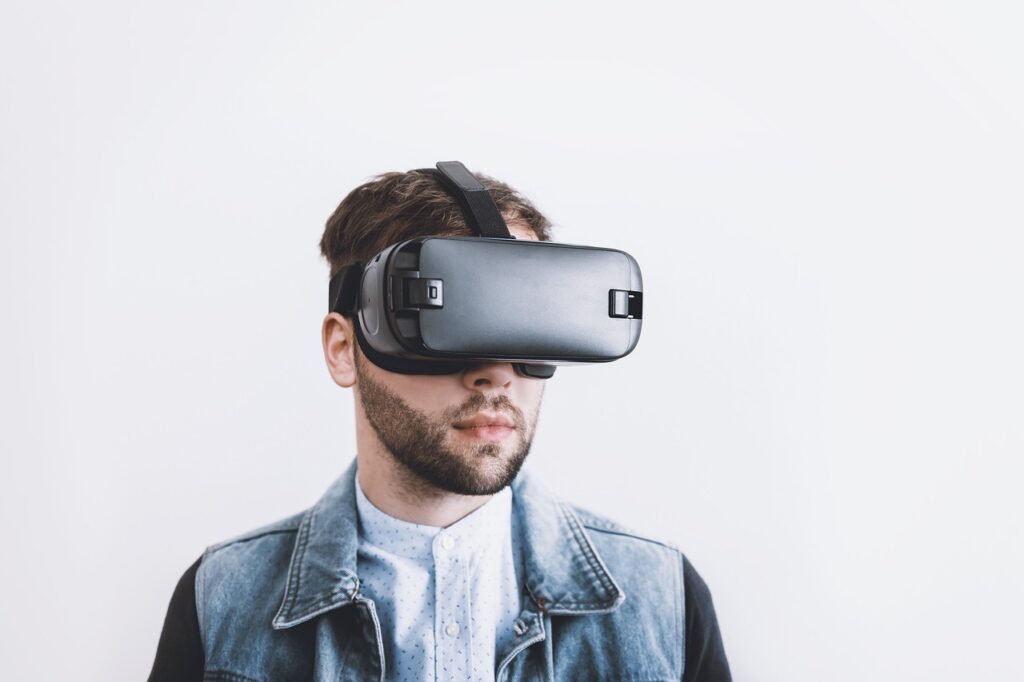
Social and Cultural Impact: Technology has influenced social interactions, cultural practices, and societal norms. Social media platforms, online communities, and digital activism have facilitated new modes of expression, collaboration, and social change.
Technology development continues to shape the world, driving innovation, opening up new possibilities, and addressing global challenges. It is crucial to ensure the responsible and ethical use of technology, addressing issues such as privacy, security, and equitable access to its benefits, in order to create a positive and inclusive impact on society.
Technology articles
However, there are various online platforms and publications where you can find articles on technology. Some popular sources include for Technology development essay and topics :
TechCrunch: A leading technology media property, covering news, analysis, and opinions on technology startups, products, and trends.
Wired: A magazine and online publication that covers a wide range of technology-related topics, including gadgets, science, culture, and business.
CNET: A trusted source for technology news, product reviews, and in-depth features on consumer electronics, software, and emerging technologies.
MIT Technology Review: An authoritative source on emerging technologies and their impact on society, with articles covering areas like AI, robotics, biotechnology, and more.
Engadget: A popular technology news and review website that covers gadgets, consumer electronics, gaming, and the latest tech trends.
Forbes Technology: The technology section of Forbes covers a wide range of topics, including startups, cybersecurity, AI, and technology business trends.
The Verge: A technology-focused media outlet that covers the latest news, product reviews, and features on consumer electronics, software, and technology culture.
Gizmodo: A technology and science-focused website that covers news, reviews, and features on gadgets, emerging technologies, and scientific discoveries.
IEEE Spectrum: A publication by the Institute of Electrical and Electronics Engineers (IEEE), offering in-depth technical articles, news, and analysis on various technology domains.
VentureBeat: A technology-focused media company that covers emerging technologies, startups, and the intersection of technology with business, culture, and society.
Technology development courses
If you’re interested in pursuing courses related to technology development, numerous options are available both online and in traditional educational institutions. Here are some popular technology development courses and programs:
Computer Science: Computer science programs cover a wide range of topics related to technology development, including programming, algorithms, software engineering, databases, and computer architecture.
Software Development: Courses focused specifically on software development provide training in programming languages, software design principles, testing, and project management.
Web Development: Web development courses teach the skills needed to build websites and web applications, including front-end development (HTML, CSS, JavaScript) and back-end development (server-side programming, databases).
Data Science and Analytics: Courses in data science and analytics focus on extracting insights from data using statistical analysis, machine learning, data visualization, and data manipulation techniques.
Mobile App Development: These courses teach the skills necessary to develop mobile applications for platforms such as iOS and Android, including mobile app design, programming languages (like Swift or Java), and app deployment.
User Experience (UX) Design: UX design courses focus on creating intuitive and user-friendly interfaces and experiences for software and digital products. They cover usability principles, user research, prototyping, and user testing.
Project Management: Project management courses provide knowledge and skills to plan, execute, and manage technology development projects effectively. They cover project planning, team coordination, risk management, and project evaluation.
Agile and Scrum: Agile and Scrum courses introduce methodologies for iterative and flexible software development. They teach principles and practices of Agile development, including Scrum framework, backlog management, and sprint planning.
Artificial Intelligence (AI) and Machine Learning: AI and machine learning courses delve into the concepts and techniques employed to develop intelligent systems. They cover topics such as neural networks, deep learning, natural language processing, and AI applications.
Internet of Things (IoT): IoT courses focus on the development of connected devices and systems. They cover topics like IoT architectures, sensor integration, data communication, and IoT security.
These are just a few examples; there are many more specialized courses and programs available, depending on your specific interests and goals. You can explore online learning platforms like Coursera, edX, Udacity, and Khan Academy, as well as university websites and local educational institutions to find technology development courses that suit your needs.
Definition of technology for students
For students, the definition of technology can be described as follows:
Technology refers to the tools, techniques, systems, and processes used to solve problems, accomplish tasks, and improve the quality of life. It encompasses a wide range of objects and methods, both physical and digital, that are designed and developed to meet specific needs or goals.
Technology can be categorized into different types, including information technology (IT), communication technology, medical technology, transportation technology, and many more. It includes devices, machines, software applications, and networks that enable the creation, storage, retrieval, and transmission of information.

Technology often involves the application of scientific knowledge and engineering principles to invent or improve upon existing systems. It is constantly evolving and advancing, driven by innovation and the quest for more efficient, effective, and sustainable solutions.
In the modern era, technology has become an integral part of everyday life, influencing how we communicate, learn, work, and entertain ourselves. It has transformed various industries and sectors, including education, healthcare, transportation, entertainment, and business.
Students interact with technology in various ways, from using computers, smartphones, and the internet for research and communication, to leveraging educational software, online learning platforms, and digital tools to enhance their learning experiences.
Overall, technology plays a crucial role in shaping the world and empowering individuals by providing new capabilities, opportunities, and access to information. It is a dynamic and ever-present force that continues to drive progress and innovation in society.
Technology news
There are several reputable technology news sources and websites that you can visit to stay informed about the latest technology developments. Some popular technology news sources include:
TechCrunch (www.techcrunch.com)
Engadget (www.engadget.com)
Wired (www.wired.com)
Gizmodo (www.gizmodo.com)
The Verge (www.theverge.com)
ZDNet (www.zdnet.com)
Mashable (www.mashable.com)
Forbes Technology (www.forbes.com/technology)
VentureBeat (www.venturebeat.com)
We recommend visiting these websites or exploring technology sections of major news publications to access the latest technology news and updates.
We hope you have gained an overview of technology and its various dimensions.
